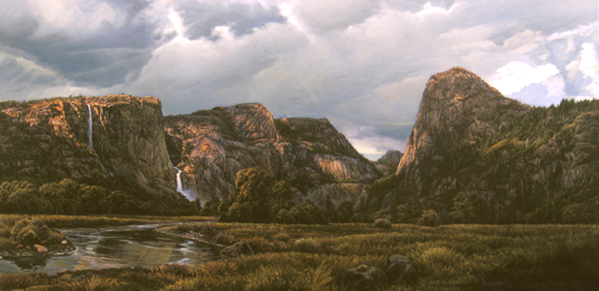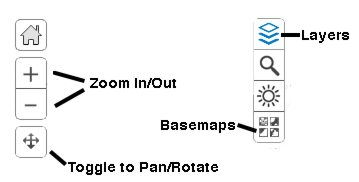
- • Environmental Defense
- • Restore Hetch Hetchy
- • California Departments of Water Resources and Parks & Recreation
- • US Department of the Interior
The activity below provides an opportunity to explore the existing San Francisco water and power system, to glimpse into the conclusions of the studies listed above and the data on which they are based, and, finally, to weigh the pros and cons of dam removal and formulate your own position.
Water & Power for San Francisco
The impact of removing O'Shaughnessy Dam on San Francisco's water and power system would be significant. The existing system serves water and power needs not only in the city, but several other Bay Area communities as well, provides power to meet San Francisco's public utility needs and those of the Turlock and Modesto Irrigation Districts, and provides flood control and irrigation to Sacramento and San Joaquin Valley farmers and towns. You need a basic understanding of the existing system as you begin to understand the impact of dam removal. The 3-D San Francisco Water Options scene contains several slides that will allow you to explore the various facilities in more geographic detail. The 2-D map allows access to data tables and the ability to explore the data. Turn the 1912 layers Off; those from 2013 On and zoom in on the contemporary layers. As you can see the system is composed of a variety of pieces:
- dams and reservoirs in the Sierras to capture and hold mountain run off
- power plants for hydroelectric power generation
- pipelines and tunnels to convey water to the Bay Area
- water treatment plants for water coming out of the California Coast Range
- holding reservoirs in the East Bay and in San Francisco

1) Where are the largest dams in the system? What is their total storage capacity? Not all of the water stored in the system's reservoirs goes for drinking water. You may have noticed when you click on Don Pedro Dam that it is owned by the Turlock Irrigation District. San Francisco has rights to 740,000 acre feet of water per year. The remainder is for irrigation. What is the adjusted total available to San Francisco?
2) What is the average age of the systems major dams? power plants?
3) Locate the three power plants in the system. What is the total average power output in millions of kilowatt hours (MkKh)? The total possible power output in California is approximately 325,000 millions of kilowatt hours per year. What percentage of this total does each of the plants in the San Francisco system provide?
4) Treatment of water in the San Francisco system is minimal because of the purity of most of the water at its source in the Sierras. Where are the two treatment plants in relation to sources outside the Sierras?
5) The pipe and tunnel pieces of the system are extensive. How extensive? The map you have is not exact in terms of the location of each section of tunnel and pipeline. You can, however, use the map and measure to estimate the total length of pipeline and tunnels that bring water across the state to the Bay Area.
Putting the Pieces Together
The issues around the removal of O'Shaughnessy Dam and restoring Hetch Hetchy Valley are complex. Analysis is well served by teamwork on both sides of the issue -- pro and con. The diagram at right suggests a division of the effort. Click on the headings for outlines of the responsibilities of team members and for descriptions of each piece of work that needs to be produced leading to a class debate. There is a bibliography of possible resources that address the issue from both sides of the argument.
Take a Stand
The final piece of this activity is for you to weigh in on the issue personally. Write an opinion piece (e.g. - a letter to the editor or a Congressional leader, a newspaper op-ed article) in which you argue for or against dam removal. Support your argument with any of the evidence gathered as part of the debate. Check the evaluation guidelines for the assignment.


image by permission of Brooks Anderson, BrooksAndersonArt.com "Hetch Hetchy: Requiem for a Valley," in the collection of Principia College, Elsah, Illinois.
